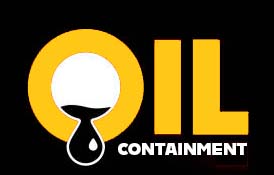Containment barriers are essential in the oil industry for preventing leaks and spills that can have detrimental effects on the environment. Secondary containment researchers play a crucial role in developing and implementing these barriers to ensure the safety and integrity of oil storage facilities. One of the most effective materials for creating containment barriers is polyurea, a versatile and durable coating that offers superior protection against leaks and corrosion.
When designing containment barriers in the oil industry, there are several key factors to consider to ensure their effectiveness and reliability. Here are some important considerations for secondary containment researchers:
-
Site Assessment: Before installing containment barriers, researchers should conduct a thorough site assessment to identify potential hazards and determine the best placement for the barriers. It is important to consider factors such as terrain, proximity to water sources, and potential sources of leaks or spills.
-
Material Selection: When it comes to creating containment barriers, the choice of material is crucial. Polyurea coatings are an excellent choice for oil industry applications due to their high tensile strength, chemical resistance, and fast curing times. Polyurea coatings can be applied to a variety of surfaces, including concrete, steel, and other materials commonly used in oil storage facilities.
-
Installation Techniques: Proper installation of containment barriers is essential for ensuring their effectiveness. Secondary containment researchers should follow manufacturer guidelines and industry best practices when applying polyurea coatings. It is important to pay attention to surface preparation, mixing ratios, and application methods to ensure a strong and durable barrier.
-
Regular Inspection and Maintenance: Once containment barriers are in place, it is important to conduct regular inspections to ensure their integrity and effectiveness. Researchers should look for signs of wear, damage, or degradation and take prompt action to address any issues. Routine maintenance, such as reapplication of polyurea coatings or repairs to damaged areas, can help extend the lifespan of containment barriers and prevent leaks or spills.
-
Compliance with Regulations: The oil industry is subject to strict regulations regarding secondary containment measures to prevent environmental damage. Secondary containment researchers must ensure that containment barriers meet all regulatory requirements and standards. By staying up to date with industry regulations and best practices, researchers can help protect the environment and prevent costly fines or penalties.
In conclusion, creating effective containment barriers in the oil industry is a critical task for secondary containment researchers. By carefully assessing sites, selecting the right materials, using proper installation techniques, conducting regular inspections, and complying with regulations, researchers can help ensure the safety and integrity of oil storage facilities. Polyurea coatings offer a durable and reliable solution for creating containment barriers that can withstand the harsh conditions of the oil industry. By following these guidelines, secondary containment researchers can help protect the environment and ensure the long-term viability of oil storage facilities.
